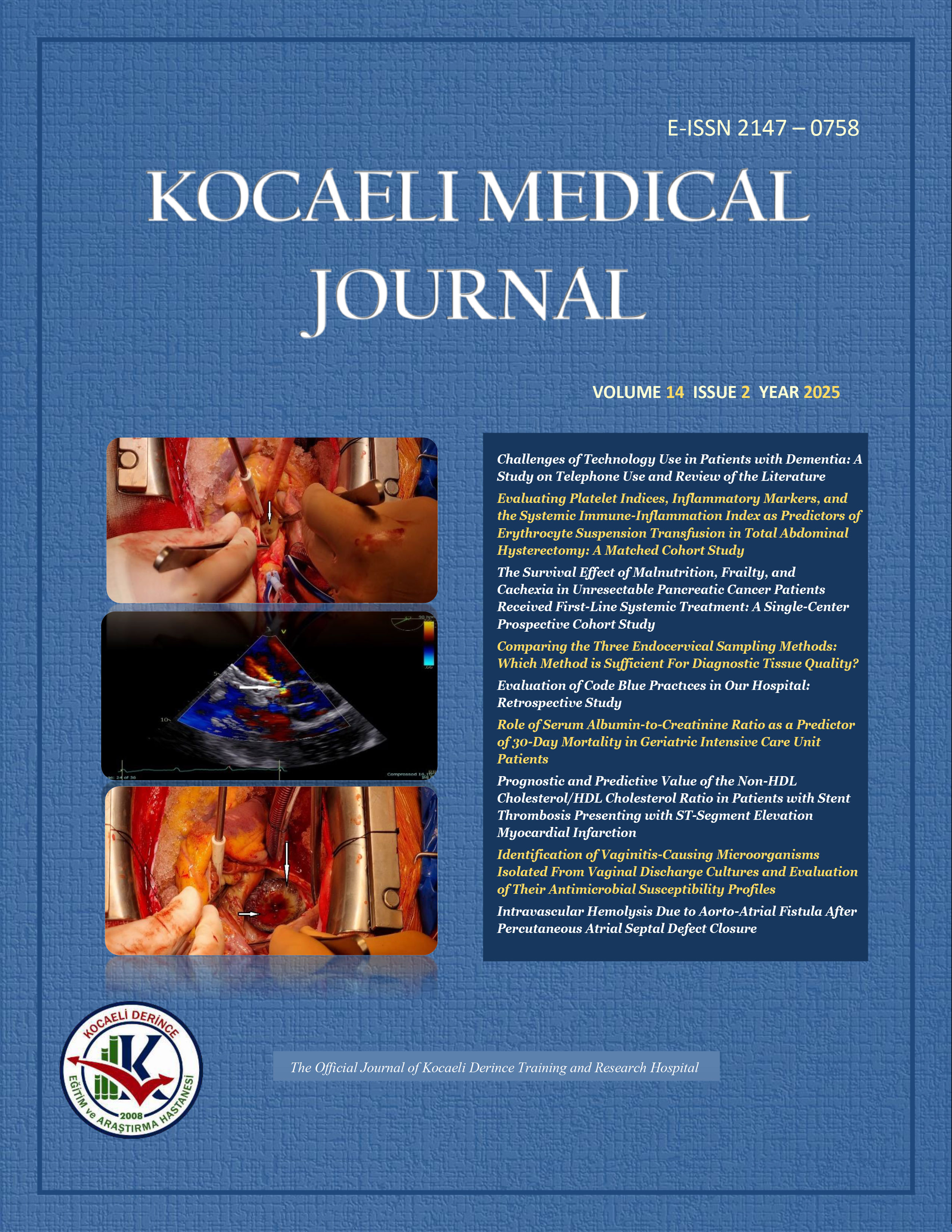
Effect of Methylphenidate on Static Balance and Risk of Falling in Children with Attention Deficit Hyperactivity Disorder
Chasan Chatip Chousein Achmet1, Özlem Yıldız Gündoğdu2, Gülcan Öztürk31Department of Child and Adolescent Mental Health and Diseases, University of Health Sciences Darıca Farabi Education and Training Hospital, Kocaeli, Turkey2Kocaeli University Faculty of Medicine, Department of Child and Adolescent Mental Health and Diseases, Kocaeli, Türkiye.
3Department of Physical Medicine and Rehabilitation, University of Health Sciences Fatih Sultan Mehmet Education and Training Hospital,Istanbul, Turkey
INTRODUCTION: Postural stability is a process that involves integrating sensory inputs and generating an appropriate motor response. Attention Deficit Hyperactivity Disorder (ADHD) can cause difficulty in motor performance and postural stability. The impact of methylphenidate (MPH) treatment on balance and risk of falling remains unclear. The purpose of this study was to evaluate the effects of MPH treatment on balance, risk of falling, and sensorimotor integration in children with ADHD.
METHODS: In this cross-sectional study children diagnosed with ADHD for the first were classified into the ADHD group(n=33), children with ADHD who were treated with MPH for at least 3 months were classified into the treatment group(n=32), and healthy children were classified into the control group (n=20). Risk of falling, static postural balance, and sensorimotor integration were evaluated using the Biodex Balance System.
RESULTS: The sway index scores in the ADHD group were statistically significant higher than those in the control group in all experimental conditions (p< 0.05). The sway index scores in the ADHD group were statistically significant higher than the treatment group in both eyes open /firm surface and eyes closed /firm surface conditions(p < 0.05).The ADHD group had significantly higher risk of falling scores in the Biodex analyses compared to the control group(p < 0.05). There was no statistically significant difference in risk of falling scores between the treatment group and the control group(p > 0.05).
DISCUSSION AND CONCLUSION: Postural balance and fall risk may have been affected in children with ADHD. MPH treatment can positively affect impaired balance and risk of falling.
Keywords: Attention deficit hyperactivity disorder, methylphenidate, postural control
Metilfenidat Tedavisinin Dikkat Eksikliği ve Hiperaktivite Bozukluğu Olan Çocuklarda Statik Denge ve Düşme Riski Üzerine Etkisi
Chasan Chatip Chousein Achmet1, Özlem Yıldız Gündoğdu2, Gülcan Öztürk31Sağlık Bilimleri Üniversitesi Darıca Farabi Eğitim ve Araştırma Hastanesi, Çocuk ve Ergen Ruh Sağlığı ve Hastalıkları Kliniği, Kocaeli, Türkiye2Kocaeli Üniversitesi Tıp Fakültesi, Çocuk ve Ergen Ruh Sağlığı ve Hastalıkları Anabilim Dalı, Kocaeli, Türkiye.
3Sağlık Bilimleri Üniversitesi Fatih Sultan Mehmet Eğitim ve Araştırma Hastanesi, Fiziksel Tıp ve Rehabilitasyon Kliniği,İstanbul, Türkiye
GİRİŞ ve AMAÇ: Postüral stabilite, duyusal inputların entegre edilmesini ve uygun bir motor cevabın oluşturulmasını içeren bir süreçtir. Dikkat Eksikliği Hiperaktivite Bozukluğu (DEHB) motor performans ve postural stabilitede zorluğa neden olabilir. Metilfenidat (MPH) tedavisinin denge ve düşme riski üzerindeki etkisi henüz netlik kazanmamıştır. Bu çalışmanın amacı DEHB olan çocuklarda MPH tedavisinin denge, düşme riski ve duyu-motor entegrasyon üzerine etkilerini değerlendirmektir.
YÖNTEM ve GEREÇLER: Bu kesitsel çalışmada ilk kez DEHB tanısı alan çocuklar DEHB grubuna (n=33), MPH ile en az 3 ay tedavi gören DEHB tanılı çocuklar tedavi grubuna (n=32), ve sağlıklı çocuklar kontrol grubuna (n=20) dahil edildi. Düşme riski, statik postüral denge ve duyu-motor entegrasyonu Biodeks Denge Sistemi (BDS) kullanılarak değerlendirildi.
BULGULAR: DEHB grubunun salınım indeksi puanları tüm BDS pozisyonlarında kontrol grubuna göre istatistiksel olarak anlamlı derecede yüksekti (p < 0.05). DEHB grubunun salınım indeksi skorları, her iki göz açık/sert yüzey ve gözler kapalı/sert yüzey koşullarında tedavi grubuna göre istatistiksel olarak anlamlı derecede yüksekti (p<0,05). DEHB grubunun Biodeks analizlerinde düşme riski kontrol grubuyla karşılaştırıldığında anlamlı derecede yüksekti (p < 0.05). Tedavi grubu ile kontrol grubu arasında düşme riski skorları açısından istatistiksel olarak anlamlı bir fark yoktu (p > 0.05).
TARTIŞMA ve SONUÇ: DEHB tanılı çocuklarda postüral denge ve düşme riski etkilenmiş olabilir. MPH tedavisi denge bozukluğunu ve düşme riskini pozitif yönde etkileyebilir.
Anahtar Kelimeler: Dikkat eksikliği hiperaktivite bozukluğu, metilfenidat, postüral kontrol
Manuscript Language: English












